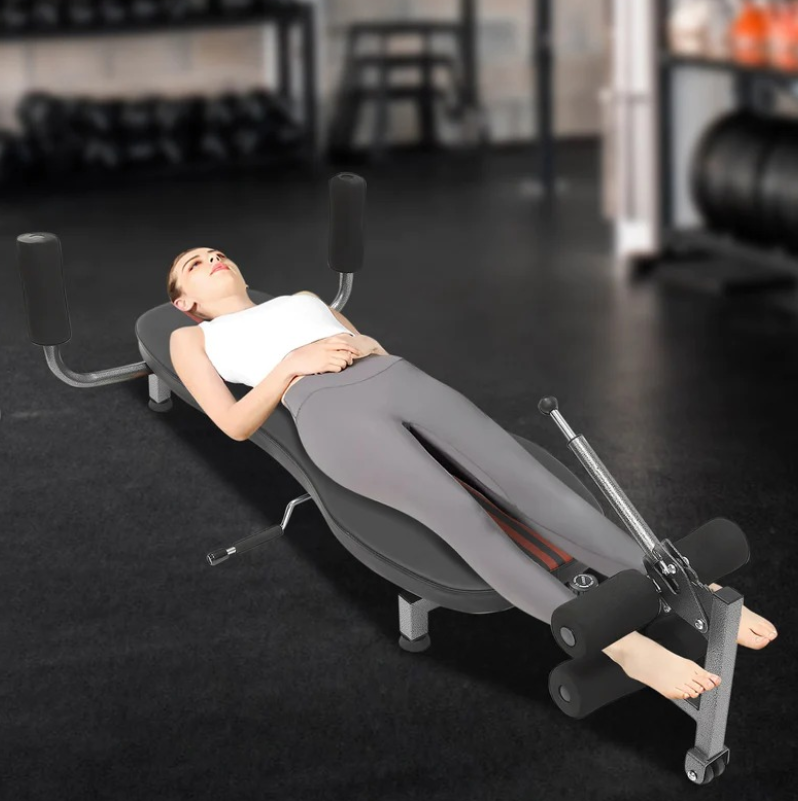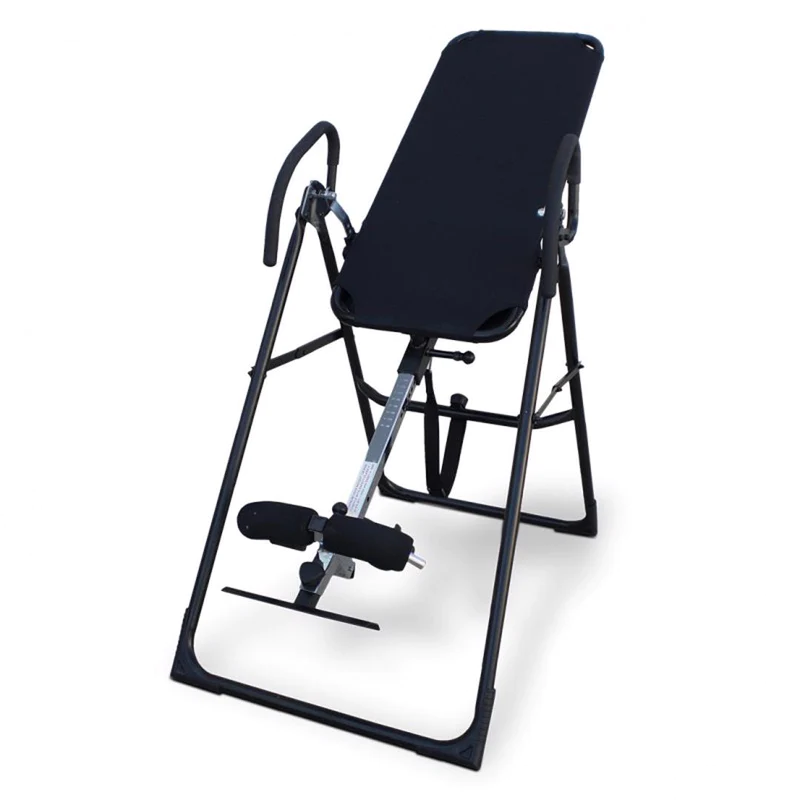
The Health Benefits and Safe Usage of Inversion Tables
Curious about flipping your world upside down for health gains? Inversion tables offer a unique way to decompress the spine, reduce back pain, and enhance circulation. But hold on – safety first! Learn the ropes before hanging like a bat from these contraptions. We’ll navigate through the advantages of inversion therapy and essential tips for a safe ride on these gravity-defying tables. Ready to explore the flip side of fitness?
Understanding Inversion Therapy and Its Benefits
Relieving Back Pain and Improving Circulation
Inversion tables are used for inversion therapy, a method where you hang upside down. This practice helps to relieve back pain by reducing spinal compression. By allowing the spine to elongate, it also enhances circulation, aiding in better blood flow throughout the body.
Inversion therapy is particularly beneficial for individuals with conditions like sciatica or scoliosis. Hanging upside down on an inversion table can provide relief by taking gravitational pressure off the nerve roots and disks in the spine.
Enhancing Flexibility and Promoting Relaxation
Using inversion tables not only reduces back pain but also increases flexibility. When inverted, your muscles stretch out gently, helping improve overall flexibility over time. This therapy aids in promoting relaxation and stress relief as it decompresses the spine.
One key benefit of inversion therapy is that it can be done at home using an inversion table. This convenience allows individuals to incorporate this practice into their daily routine easily.
Health Benefits of Using Inversion Tables
Improved Posture and Spinal Alignment
Inversion tables Australia help align the spine, which can lead to better posture. By using these tables regularly, you may notice improvements in how you stand and sit. This alignment is crucial for overall back health.
-
Better posture
-
Enhanced spinal alignment
Alleviation of Back Pain
One significant benefit of inversion tables is their ability to relieve pressure on the discs in your spine. As a result, many users experience reduced back pain after consistent use. Imagine feeling relief from that persistent ache in your lower back.
-
Reduced pressure on spinal discs
-
Decreased back pain
Joint Health and Increased Blood Flow to the Brain
Regularly using inversion tables can also have positive effects on joint health by increasing flexibility and reducing stiffness. The increased blood flow to the brain during inversion can enhance cognitive function. Picture improved mobility and mental clarity as added bonuses.
Choosing the Right Inversion Table for Your Needs
Consider Height and Weight
When choosing an inversion table, consider your height and weight to ensure proper support. Different tables have varying weight capacities and height adjustments. For example, if you are taller or heavier, you will need a sturdier table that can accommodate your size.
It’s essential to select an inversion table that aligns with your body measurements to prevent accidents or injuries. By checking the manufacturer’s specifications regarding weight limits and height ranges, you can find a suitable table that provides adequate support during inversion therapy.
Adjustable Settings and Safety Features
Look for inversion tables with adjustable settings to customize your experience based on your comfort level and specific needs. Some models allow you to control the degree of inversion, providing flexibility in how far back you tilt.
Prioritize safety features such as ankle locks and sturdy construction when purchasing an inversion table. Ankle locks help secure your feet during inversion, preventing slips or falls. Sturdy construction ensures stability while inverted, reducing the risk of accidents.
Read Also: The Therapeutic Science Behind Inversion Machines
How to Safely Use an Inversion Table

Gradual Incline Adjustment
When using an inversion table, it’s crucial to start with a gentle incline and slowly increase the angle over time. By doing this, your body can acclimate to being upside down, reducing the risk of dizziness or discomfort. Begin at a shallow angle, such as 20-30 degrees, for short periods before progressing to steeper angles.
It’s essential to listen to your body and not push yourself too far too quickly. Increasing the inversion angle gradually allows your muscles and joints to adapt without strain or shock.
Adherence to Manufacturer’s Instructions
Always adhere strictly to the manufacturer’s instructions when setting up and using an inversion table. These guidelines are designed for your safety and comfort while utilizing the equipment properly. Ensure that all components are securely in place before each use.
Following these instructions will help prevent accidents or malfunctions that could lead to injuries while also maximizing the benefits you receive from using the inversion table.
Exploring the Potential Risks of Inversion Tables
Dizziness and Nausea
Using inversion tables excessively can lead to dizziness and nausea. These symptoms may occur due to the sudden change in blood flow when you invert your body. It is essential to start with shorter sessions and gradually increase the angle of inversion to prevent these issues.
Eye Conditions and Cardiovascular Issues
If you have certain eye conditions or glaucoma, it is crucial to seek advice from a healthcare professional before using an inversion table. The increased pressure in the eyes during inversion could worsen these conditions. Similarly, individuals with underlying cardiovascular problems should be cautious as inverting can affect blood pressure and heart rate.
Inversion Therapy: When to Seek Medical Advice
Consultation with Healthcare Professional
Before starting inversion therapy, it’s crucial to consult a healthcare professional, especially if you have underlying health conditions. Certain medical issues may be aggravated by inversion tables. For instance, individuals with high blood pressure or glaucoma should seek medical advice before using inversion tables.
It’s essential to prioritize your safety and well-being when engaging in inversion therapy. If you experience severe pain or discomfort during the session, stop immediately and consult a healthcare provider. Pain is your body’s way of signaling that something isn’t right; ignoring it could lead to further injury or complications. Remember, your health comes first.
Pregnancy Considerations
For pregnant women, it is advisable to avoid using inversion tables without consulting their doctor first. The effects of being inverted can potentially impact both the mother and the developing fetus negatively. Always prioritize the safety of both you and your baby by seeking guidance from a healthcare professional before attempting any form of inversion therapy.
Maximizing the Benefits of Inversion Tables
Enhancing Flexibility
Incorporate regular stretching exercises while using inversion tables to boost flexibility. Stretching in an inverted position can help lengthen muscles and improve range of motion. For example, performing gentle yoga poses while inverted can enhance the benefits of inversion therapy.
Regularly practicing stretching exercises while inverted helps prevent muscle stiffness and promotes better circulation throughout the body. This combination not only increases flexibility but also aids in relieving tension and improving overall mobility.
Gradual Progression
To use inversion tables safely and effectively, it’s crucial to gradually increase the duration of your sessions as your body gets accustomed to being inverted. Start with short sessions, such as 1-2 minutes, then slowly extend the time as you feel more comfortable. Slowly building up allows your body to adapt without causing strain or discomfort.
Read Also: How Pilates Home Equipment Transforms Your Fitness & Mindset
Increasing the duration gradually reduces the risk of dizziness or discomfort that may occur when first starting inversion therapy. By listening to your body’s signals and progressing at a steady pace, you can maximize the health benefits without overexerting yourself.
Summary
You’ve learned about the incredible health benefits of inversion tables and how to use them safely. Remember, choosing the right inversion table is crucial for your needs. Safely using an inversion table and being aware of the potential risks is key to maximizing its benefits without harm.
If you experience discomfort or have underlying health conditions, seeking medical advice is essential. By following these guidelines and listening to your body, you can make the most of inversion therapy. So, why wait? Take charge of your health and experience the upside-down world of inversion tables today! Shop at our gym equipment Perth mega showroom now. Shop high-quality home gym and a range of gym equipment today.
